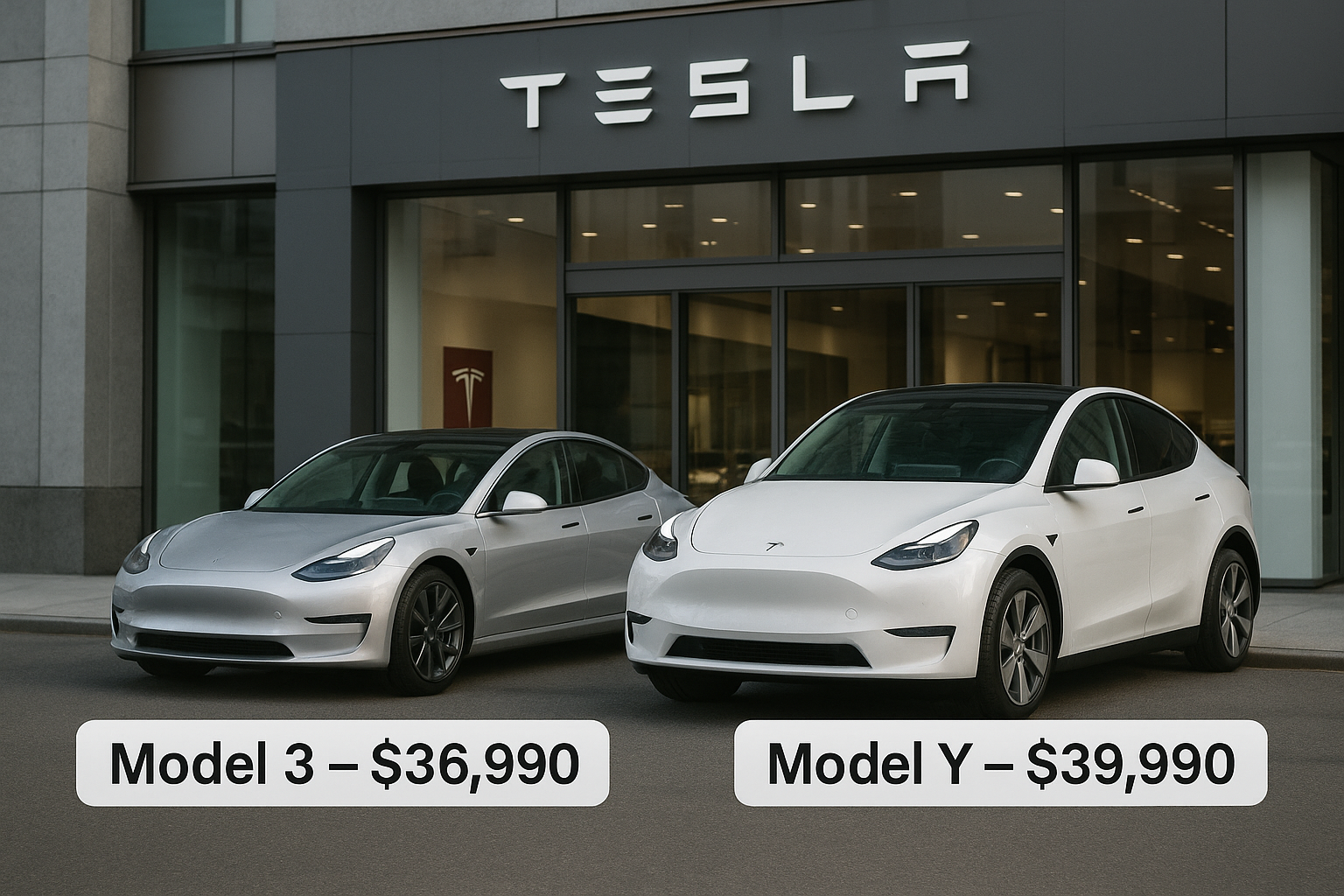Tesla launches cheaper Model 3 and Model Y to revive demand, shares slide 4%

Tesla (NASDAQ: TSLA) unveiled lower-cost versions of its two best-selling vehicles — the Model 3 sedan and Model Y SUV — on Tuesday, as the electric vehicle maker works to reignite flagging sales and defend its market share.
The new versions are priced at $36,990 for the Model 3 and $39,990 for the Model Y, signaling a renewed push into the mass-market segment that Chief Executive Elon Musk has long promised.
Tesla shares fell 4.2% in afternoon trading following the announcement, reflecting investor caution about how the price cuts might affect profit margins.
The move comes as Tesla faces growing competition in global EV markets, especially from Chinese automakers and legacy car manufacturers expanding their electric lineups.
Musk has frequently emphasized affordability as central to Tesla’s long-term growth.
During the company’s second-quarter earnings call in July, he acknowledged that “the desire to buy the car is very high,” but affordability remains a major barrier.
“The more affordable we can make the car, the better,” Musk said.
A step toward the mass market — and Musk’s $1 Trillion goal
For years, Musk has spoken about producing a truly mass-market vehicle, including a long-rumored $25,000 EV.
However, that plan was canceled last year, according to Reuters.
Late in 2023, Musk had said Tesla was working on a vehicle priced below the “key threshold” of $30,000 after applying US electric vehicle tax credits.
That tax credit, worth $7,500, expired at the end of last month, effectively pushing prices higher and boosting Tesla’s quarterly deliveries ahead of the deadline.
Analysts expect that sales could slow through the remainder of the year unless Tesla’s latest price cuts reignite demand.
The launch of more affordable models also plays a key role in Musk’s $1 trillion pay plan, which is tied to Tesla reaching operational and valuation milestones.
Achieving the company’s goal of delivering 20 million vehicles over the next decade will likely depend on how effectively Tesla can expand its lower-priced lineup.
Analysts see a pricing play, not a product breakthrough
Market analysts reacted cautiously to the announcement, noting that the new models are primarily a pricing move rather than a technological leap.
Seth Goldstein, an analyst at Morningstar, said the lower prices could “help Tesla grow deliveries as it opens the Model 3 and Model Y up to more consumers who are not able or willing to pay up for a higher-priced vehicle.”
However, Shay Boloor, chief market strategist at Futurum Equities, described the move as “a pricing lever and not much a product catalyst.”
He added that the $39,900 Model Y “undercuts the psychological $40,000 barrier” but may not significantly expand Tesla’s customer base.
“You’ll get some volume lift but mostly from buyers trading down from the premium trims,” he said.
Despite the pricing strategy, Tesla continues to face broader challenges, including slowing sales, intensifying global competition, and political backlash in key markets.
Musk has increasingly shifted Tesla’s strategic focus toward artificial intelligence, robotaxis, and humanoid robots — ventures that could shape the company’s future beyond cars.
The post Tesla launches cheaper Model 3 and Model Y to revive demand, shares slide 4% appeared first on Invezz



